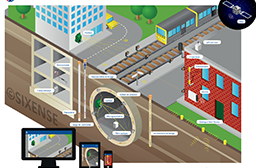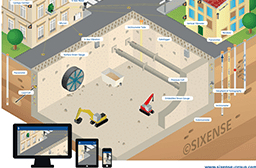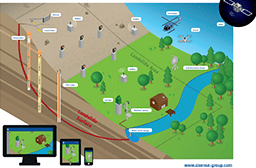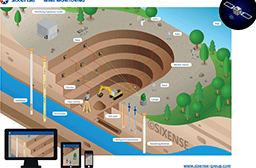Total safety for earthworks, excavations, foundations and operations
The construction of earthworks, specialist foundations, tunnels and other subsurface structures inevitably generates ground movements that may require monitoring. Using geotechnical sensors to carry out this task provides control of geotechnical risks, and can contribute input to the process of optimising the dimensioning of subsurface structures.
Sensors installed during the earthworks project can be retained for long-term monitoring of cuttings and embankments, for example.
Geotechnical sensors can also be used to monitor soil movements such as landslips, settlement, etc. The data the instruments provide helps engineers and consultants understand and diagnose the cause of the failure, and in turn this helps remedial solutions to be designed and deployed on site to arrest or manage future movements.
Installed on the surface or below ground, geotechnical sensors can be used to measure:
- Soil water levels
- Ground deformations: settlements, heave and slip
- Stress states, etc.




